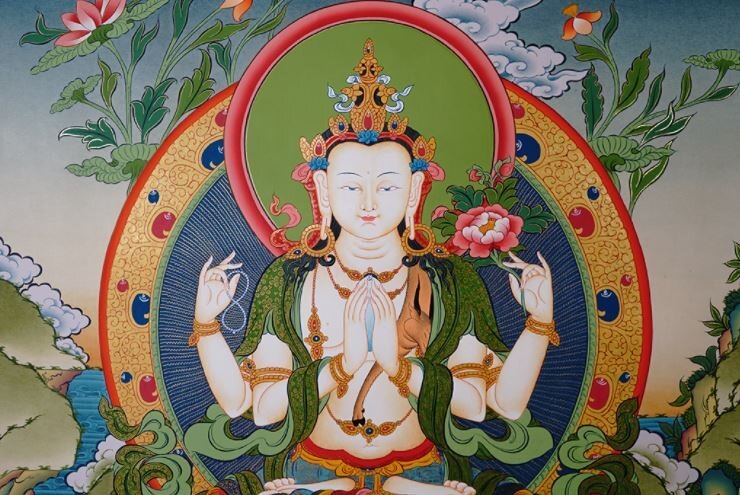
Menu

In the serene landscape of Sikkim, art and spirituality are deeply intertwined. Among the many traditional art forms of the region, Thangka paintings hold a special place. These sacred scroll paintings, rich with intricate details and vibrant colors, are more than just beautiful artworks — they are devotional objects, teaching tools, and spiritual aids that have been cherished for centuries.
Origins and Meaning
The word “Thangka” originates from the Tibetan term meaning “something that can be rolled up.” This perfectly describes these portable works of art, which monks, travelers, and devotees could easily transport from place to place. Introduced to Sikkim through the spread of Tibetan Buddhism, Thangkas typically depict Buddhist deities, mandalas (spiritual diagrams), or important religious scenes. Each element in a Thangka painting is highly symbolic and follows strict guidelines to maintain its spiritual power.
Craftsmanship and Technique
Creating a Thangka is a painstaking process that demands incredible skill, patience, and devotion. Traditionally, artisans use natural pigments derived from minerals, plants, and even precious metals like gold. The canvas is first stretched on a frame and treated with a mixture of chalk and glue. Artists then carefully sketch the outline of the image, following proportions that have remained unchanged for centuries.
The painting process involves layer upon layer of color, with the final steps including intricate details and sacred inscriptions. Some Thangkas are further adorned with embroidered silk brocade, transforming them into breathtaking hanging scrolls used during religious ceremonies.
Purpose and Usage
In Sikkim, Thangkas are not merely decorative pieces. They serve as teaching tools to illustrate the life of the Buddha, the Wheel of Life, or other religious concepts. Monks use them during meditation to visualize deities and complex spiritual ideas. Displayed during important religious festivals, they also bless the environment and the community with positive energy.
For the layperson, a Thangka at home offers protection and serves as a daily reminder of spiritual goals. In monasteries like Rumtek and Pemayangtse, some of the most exquisite Thangkas are preserved, allowing visitors to witness the spiritual and artistic legacy firsthand.
A Living Tradition
Despite modern influences, Thangka painting in Sikkim remains a living tradition. Contemporary artists are trained under master painters to preserve the authenticity and sacredness of the craft. Today, these artworks continue to bridge the past and present, keeping alive a form of devotion that is as vivid as the colors on the canvas.



